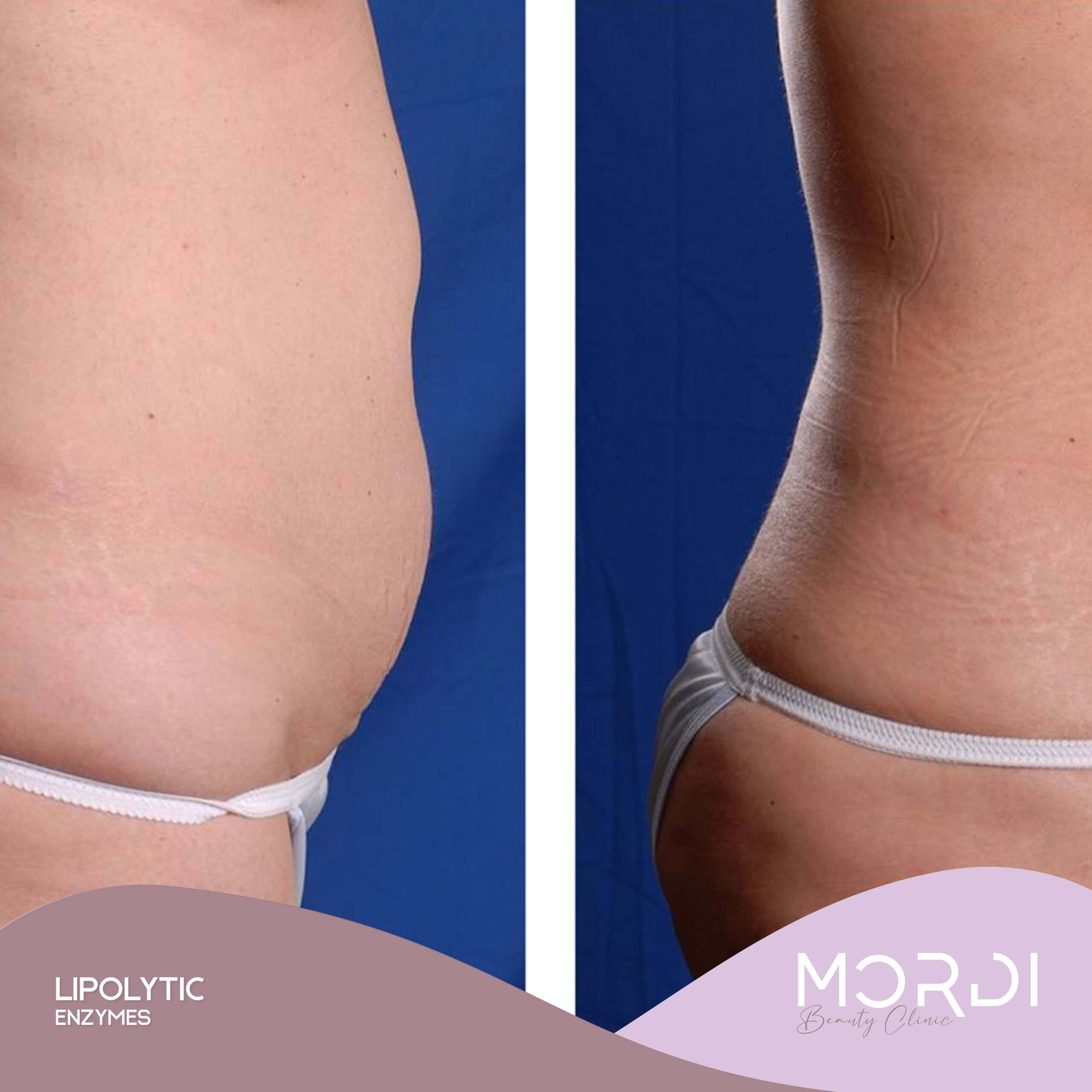What is Enzyme Lipolysis Therapy?
Injection lipolysis involves the injection of enzyme compounds to stimulate weight loss and break down fat. Injections are administered through the skin in problem areas of the body.
But what exactly are Lipolytic Compounds?
Lipolytic compounds consist of natural ingredients that help break down fat cells. They can have either a direct effect – destroying fat cells themselves, or an indirect effect – where fat is broken down by activating biochemical processes in the body, but the fat cells are not destroyed.
What are Enzymes?
Enzymes are special proteins in the body that act as a catalyst to accelerate certain metabolic processes. They can locally reduce fat deposits and cellulite and restore skin elasticity.
What types of Enzymatic Lipolysis or Enzyme Therapy exist?
Each type of enzyme solves a different problem:
- The first type, which uses a combination of lipase, hyaluronidase and collagenase, makes the skin supple.
- The second type uses lipase, lyase, collagenase and hyaluronic acid which has the same effect but additionally moisturizes the skin.
How is Enzyme Therapy administered?
An injection is administered on the skin of the problematic area (each injection covers around 20 cm2). Approximately 1-4 procedures are done at an interval of 21 days.
The injection contains pain medication to make the procedure more comfortable.
What can Enzyme Therapy help with?
- Breast glands
- Fat deposits on hips
- The neck
- The thigh area
- Under the shoulder blades
Benefits of Enzyme Therapy:
- Acts rapidly
- Long-term effect
- Minimum rehabilitation time
- You can work on specific zones
Things to be aware of with Enzyme Therapy:
- Possible allergic reactions
- Sagging of the skin due to weight loss can occur
- Some pain can occur
At Mordi Beauty Clinic we’re happy to help.
We have the specialised equipment and extensive experience necessary to support you with your enzyme therapy journey.
Schedule appointment:
To schedule an evaluation, please fill in your contact info in the following form, indicating a possible date and the procedure you're interested in.














